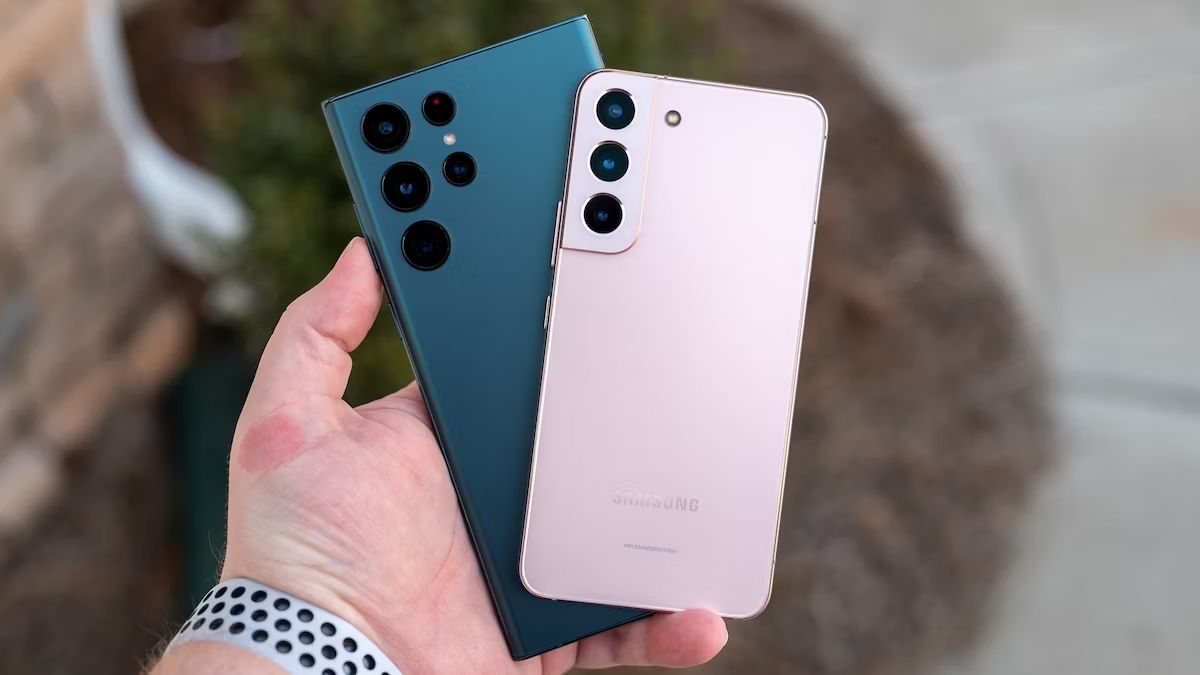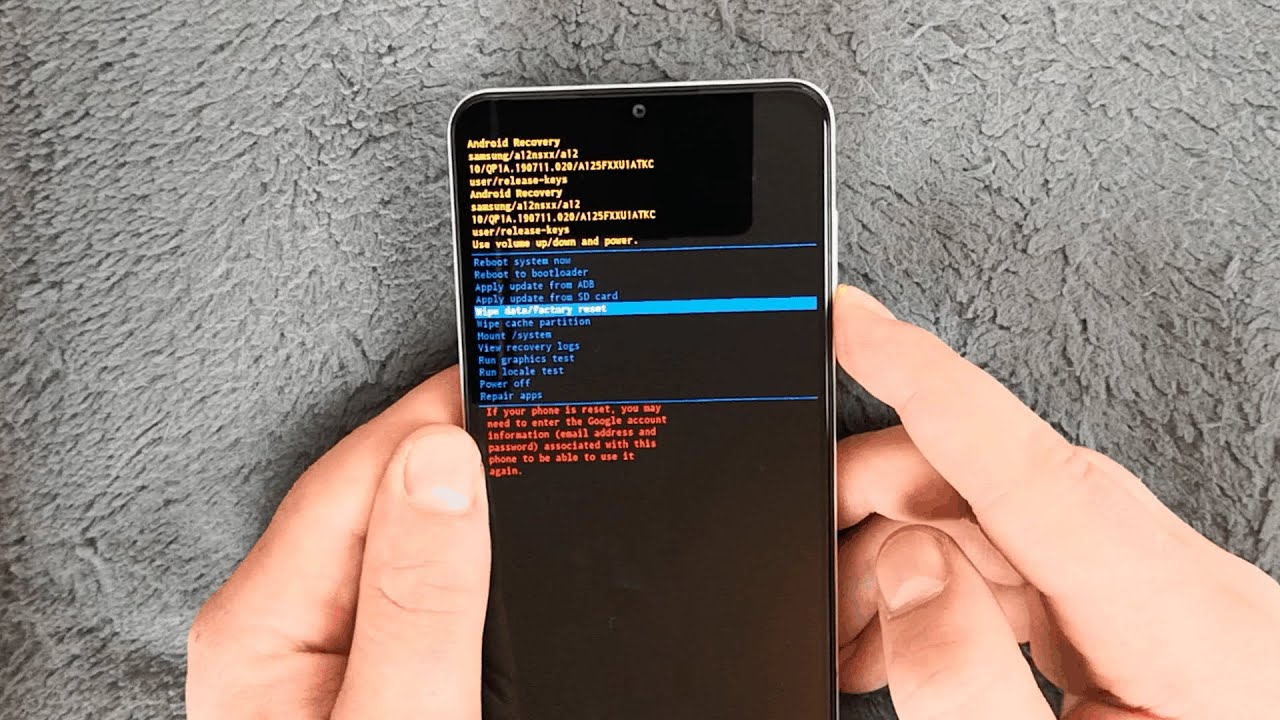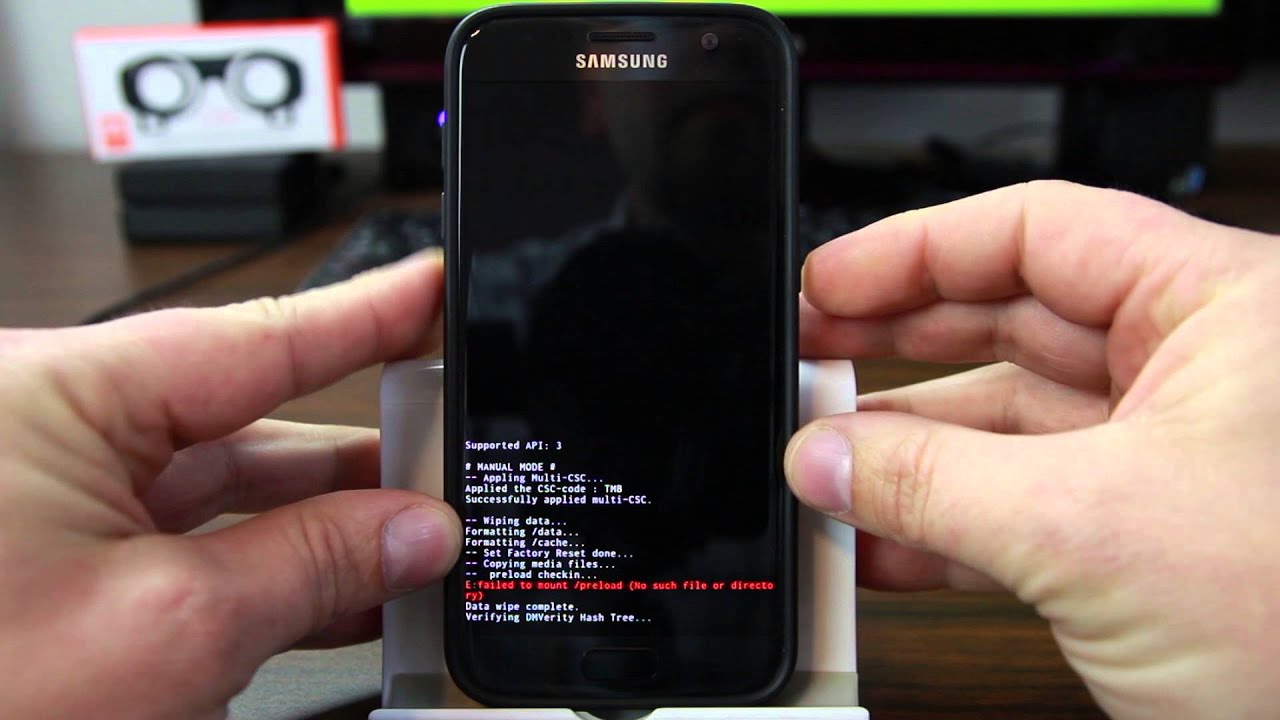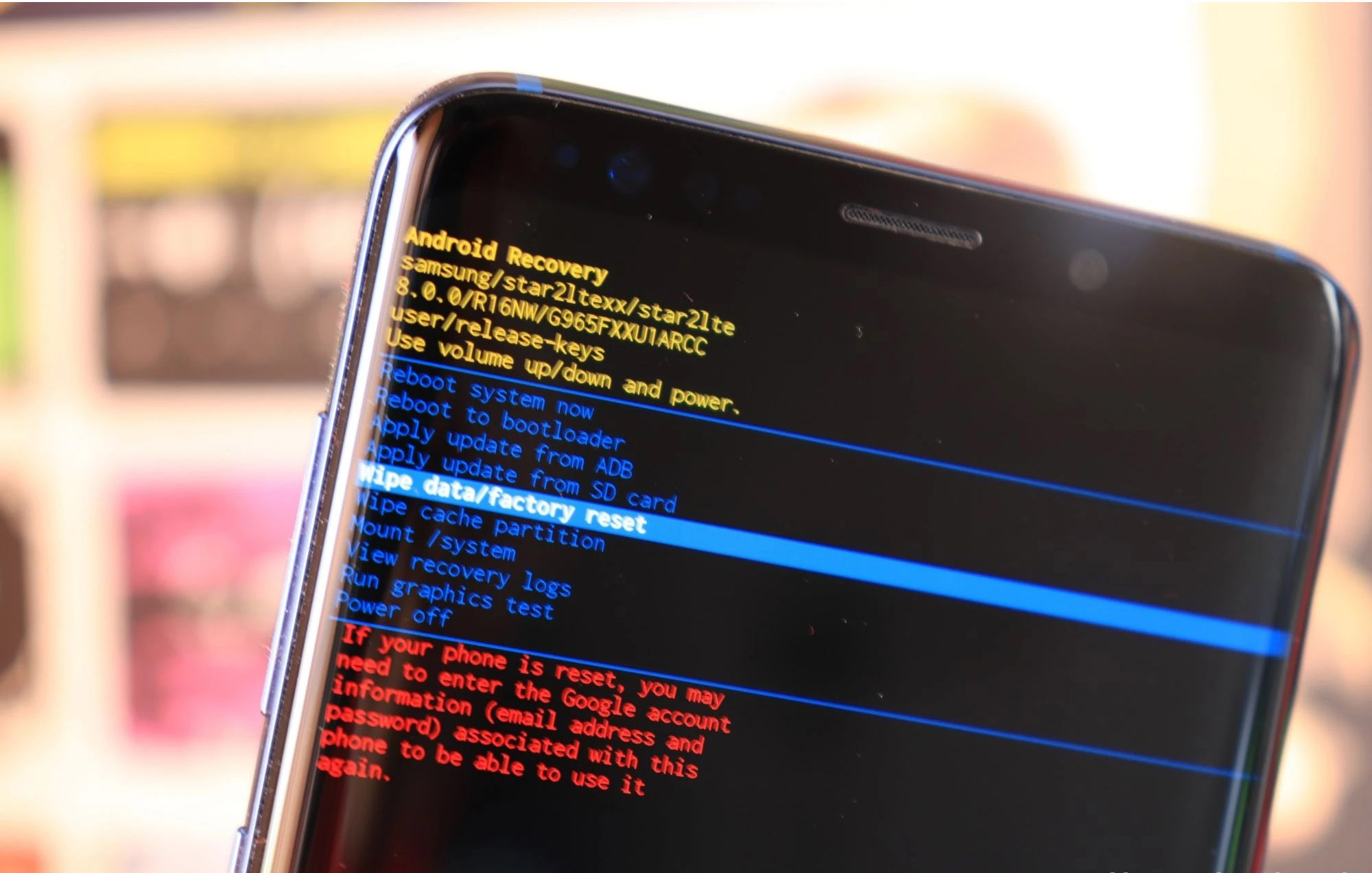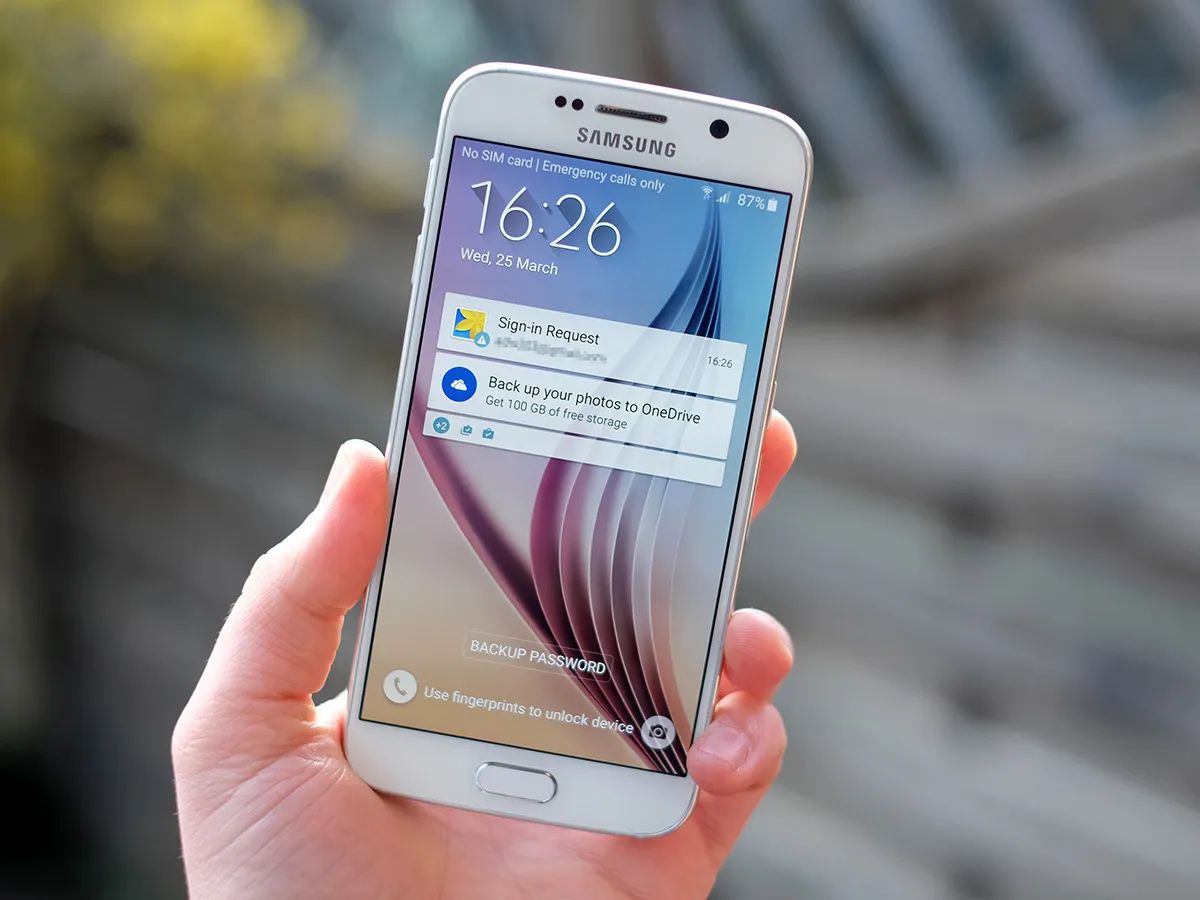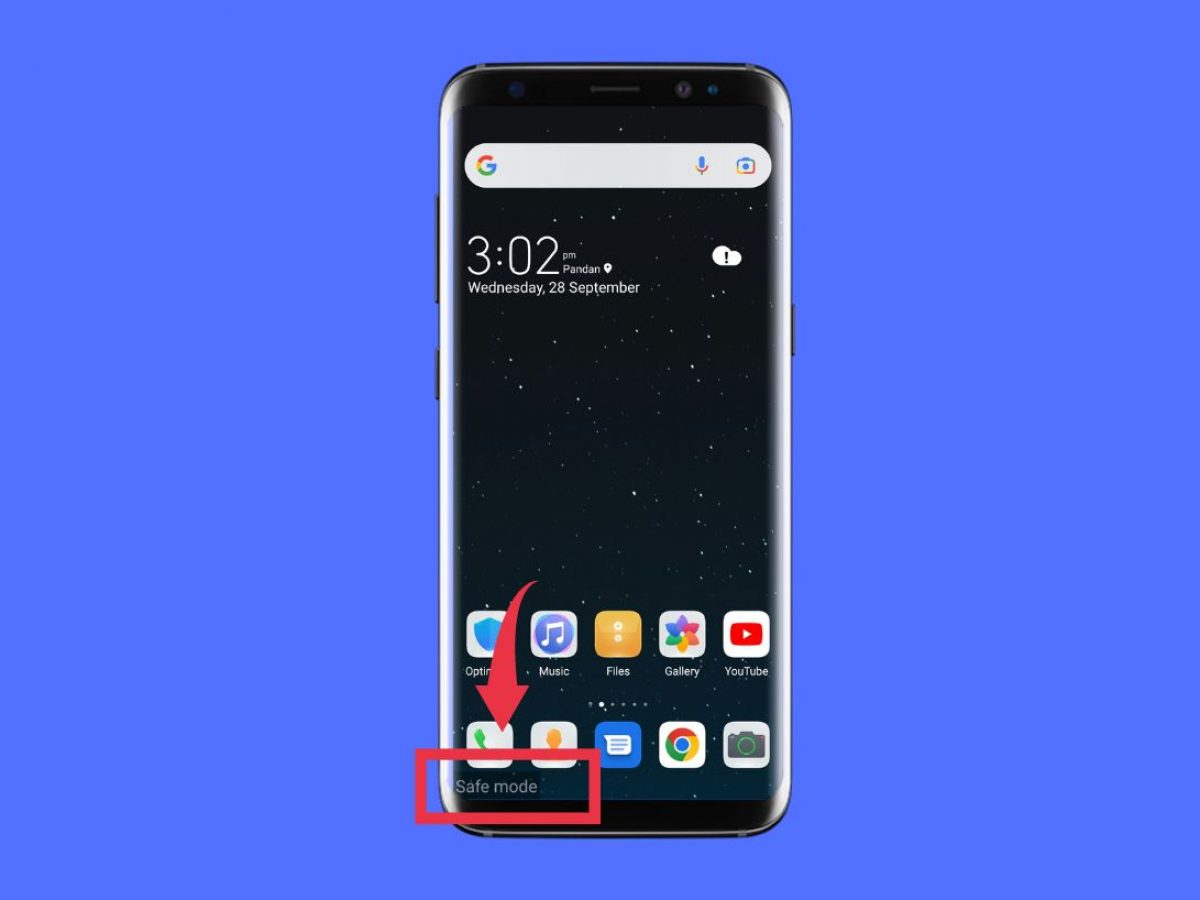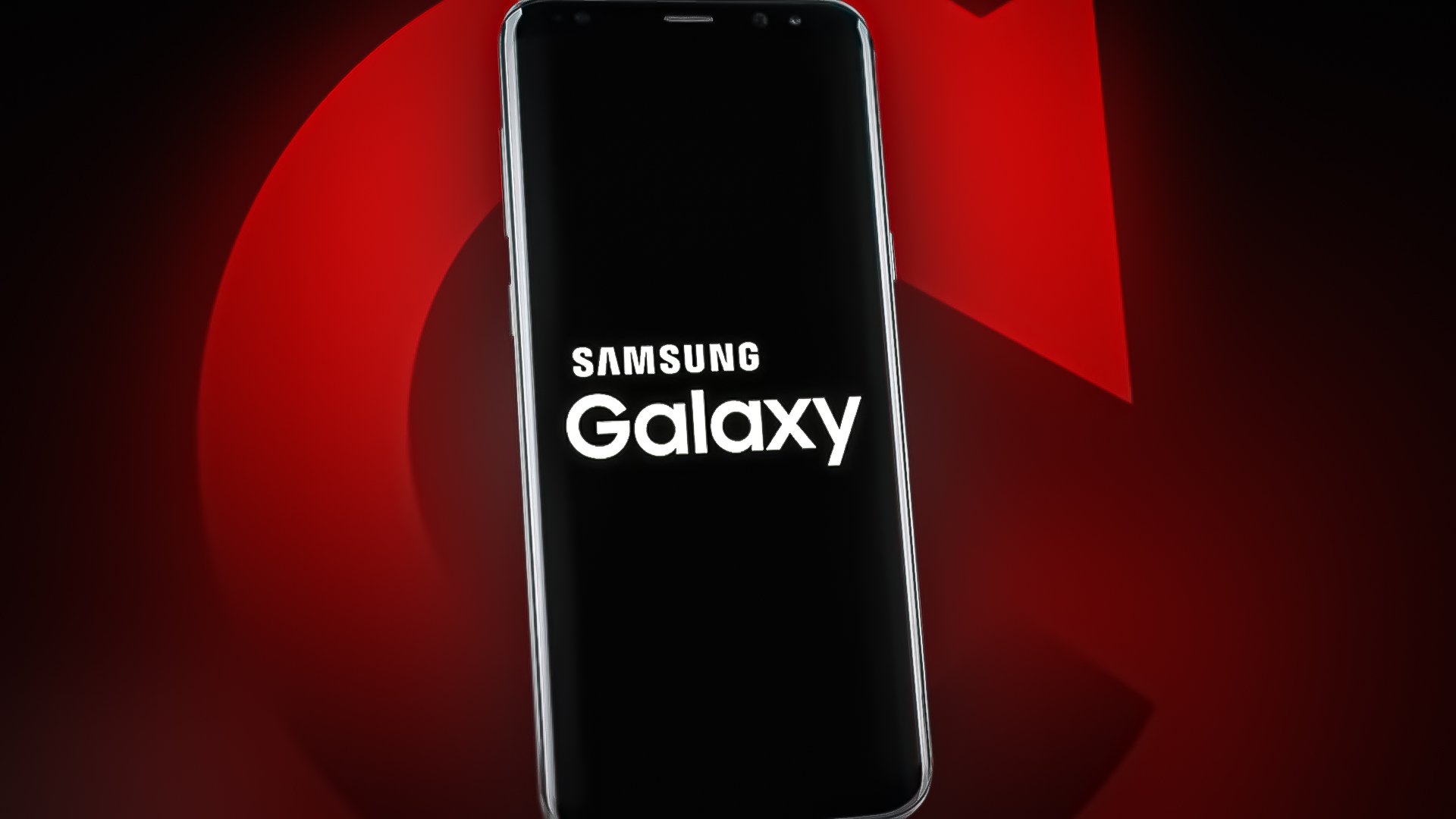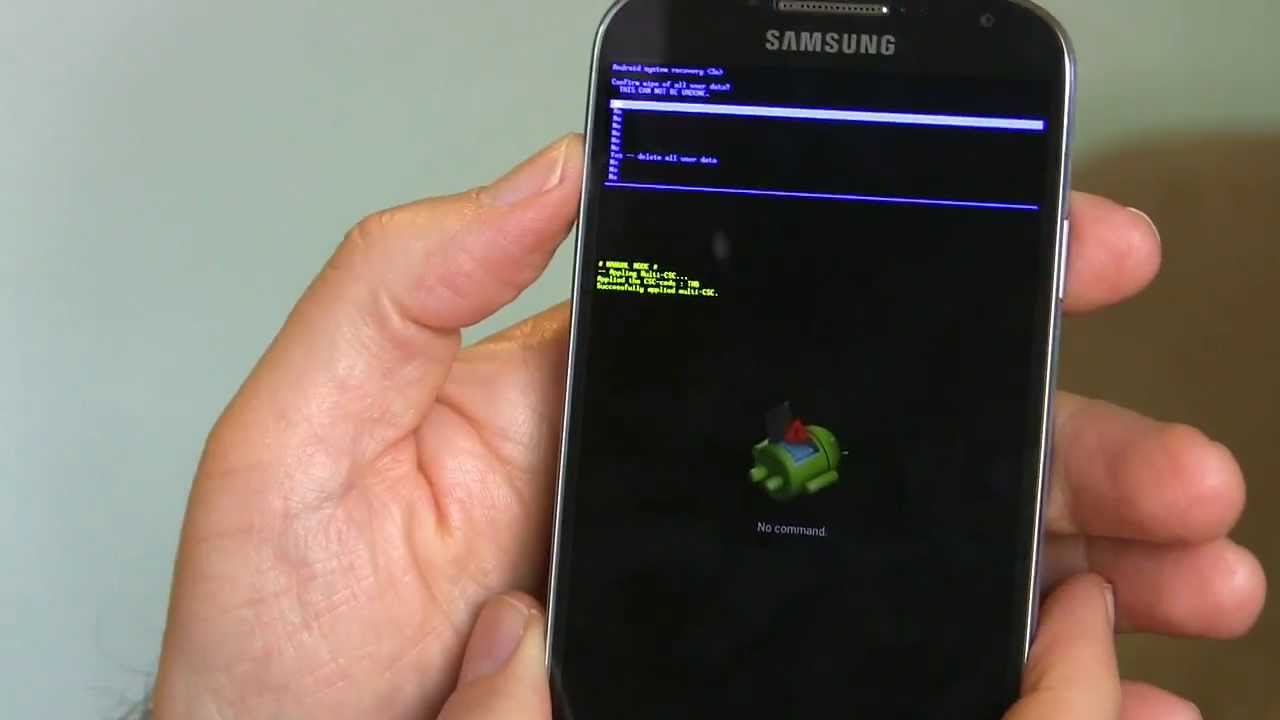Introduction
Welcome to our guide on how to factory reset your Samsung Galaxy phone. Whether you’re experiencing software issues, planning to sell or give away your device, or simply want to start fresh, a factory reset can be an effective solution. This process will restore your device to its original state, erasing all data and settings to provide a clean slate.
The Samsung Galaxy series has gained immense popularity among smartphone users worldwide, thanks to its advanced features, sleek design, and user-friendly interface. However, like any electronic device, your Galaxy phone may encounter occasional glitches, become slow and unresponsive, or face compatibility issues with certain apps. In such cases, a factory reset can often resolve these problems, giving your phone a fresh start.
Before delving into the details of how to factory reset your Samsung Galaxy phone, it’s essential to understand the implications of this process. Performing a factory reset will erase all personal data, including contacts, messages, photos, and apps, from your device’s internal storage. Therefore, it’s crucial to back up any important data beforehand to ensure you don’t lose anything valuable. We will discuss this further in the next section.
In this comprehensive guide, we’ll walk you through the step-by-step process of factory resetting your Samsung Galaxy phone. We’ll cover different methods you can use, including resetting through the Settings menu, using hardware buttons, and utilizing the Samsung Find My Mobile service. We’ll also provide tips and precautions to consider before and after the factory reset to ensure a smooth and successful process.
So, if you’re ready to restore your Samsung Galaxy phone to its factory settings and start fresh, let’s jump right in and explore the various methods to perform a factory reset.
Why would you want to factory reset your Samsung Galaxy phone?
There are several reasons why you may consider factory resetting your Samsung Galaxy phone:
- Fixing Software Issues: Over time, your device’s software may start to experience glitches and performance issues. Apps may crash frequently, the device may become slow and unresponsive, or you may encounter compatibility issues. By performing a factory reset, you can get rid of any software bugs or conflicts, restoring your device to its original state.
- Preparing to Sell or Give Away Your Device: If you’re planning to sell or give away your Samsung Galaxy phone, performing a factory reset is essential. This ensures that all your personal data, including contacts, photos, messages, and app logins, are completely erased from the device, protecting your privacy and security.
- Resolving Performance Issues: Over time, your Samsung Galaxy phone’s performance may gradually decline due to accumulated cache files, outdated software, or a cluttered storage space. Factory resetting your device can help free up storage, clear cache, and remove unnecessary files, resulting in improved performance and speed.
- Starting Fresh: Sometimes, you may simply want a fresh start with your Samsung Galaxy phone. Perhaps you’ve installed too many apps, customized settings that no longer suit your preferences, or want to clear out all the clutter. By performing a factory reset, you can revert your device back to its original settings and enjoy a clean slate.
While factory resetting your Samsung Galaxy phone can offer several benefits, it’s important to note that it should be done with caution. As mentioned earlier, a factory reset erases all data from your device, so it’s vital to back up your important files before proceeding. Additionally, make sure to take note of any login credentials, such as for email accounts or social media platforms, as these will need to be reentered after the reset.
Now that you understand why you might want to factory reset your Samsung Galaxy phone, let’s move on to the preparations you need to make before initiating the process.
Before Factory Resetting Your Samsung Galaxy Phone
Before you proceed with a factory reset on your Samsung Galaxy phone, there are a few important steps you should take:
- Back up your data: Performing a factory reset will erase all data from your device, so it’s crucial to back up any important information beforehand. You can use various methods to back up your data, such as using cloud storage services, transferring files to a computer, or using Samsung’s Smart Switch app.
- Sync your accounts: Make sure to sync your accounts, such as Google, Samsung, and other third-party accounts, before resetting your device. This will ensure that your contacts, calendar data, and app settings are backed up and can be easily restored once the reset is complete.
- Take note of your apps and settings: Before factory resetting your device, make a note of all the apps you have installed and any custom settings you may have applied. This will help you remember what needs to be reinstalled or reconfigured after the reset.
- Remove external storage: If your Samsung Galaxy phone has an external SD card, it’s recommended to remove it before performing a factory reset. While a factory reset typically doesn’t affect the data on the SD card, it’s better to be safe and avoid any accidental data loss.
- Charge your phone: Ensure that your Samsung Galaxy phone has sufficient battery charge before initiating the factory reset. A low battery during the reset process could cause issues, and it’s best to have your device connected to a charger or fully charged.
- Understand the consequences: It’s important to be aware that a factory reset will erase all data and settings on your Samsung Galaxy phone. This includes apps, contacts, messages, photos, and any personalized configurations. Take a moment to consider if a factory reset is truly necessary and if you have backed up everything important.
By following these preparations, you can ensure a smoother experience when factory resetting your Samsung Galaxy phone. Now, let’s move on to the various methods you can use to perform the factory reset.
How to Factory Reset Samsung Galaxy Phone: Step-by-Step Guide
Resetting your Samsung Galaxy phone to its factory settings is a straightforward process. In this section, we’ll outline three different methods you can use to perform a factory reset on your device: through the Settings menu, using hardware buttons, or via the Samsung Find My Mobile service.
Method 1: Factory Reset through Settings
- Open the “Settings” app on your Samsung Galaxy phone.
- Scroll down and tap on “General Management”.
- Tap on “Reset” or “Reset options”.
- Select “Factory data reset” from the list of options.
- Review the information presented and tap on “Reset” or “Delete all”.
- Enter your device PIN, pattern, or password to proceed with the reset.
- Confirm the factory reset by tapping on “Delete all” or “Reset”.
- Your Samsung Galaxy phone will now begin the reset process. Once completed, it will restart, and you’ll be taken to the initial setup screen.
Method 2: Factory Reset using Hardware Buttons
- Turn off your Samsung Galaxy phone.
- Press and hold the volume up button, power button, and the home button (if applicable) simultaneously.
- Release all the buttons once the Samsung logo appears on the screen.
- Using the volume down button, navigate to the “Wipe data/factory reset” option.
- Press the power button to select the option.
- Using the volume down button, highlight and select the “Yes – delete all user data” option.
- Wait for the reset process to complete. The device will then reboot and return to its initial setup screen.
Method 3: Factory Reset using Samsung Find My Mobile
- Visit the Samsung Find My Mobile website (findmymobile.samsung.com) on a computer or another smartphone.
- Sign in using your Samsung account credentials.
- Click on “Lock my screen” on the left side of the screen.
- Enter a new PIN in the “Lock my screen” window and click on “Lock”.
- On your Samsung Galaxy phone, enter the new PIN that you set in step 4.
- Go back to the Samsung Find My Mobile website and click on “Unlock my screen”.
- Scroll down and click on “Unlock”.
- Finally, click on “Delete all data” to perform the factory reset.
By following any of these methods, you can successfully perform a factory reset on your Samsung Galaxy phone. Once the reset is complete, you’ll need to go through the initial setup process and restore any backups or reconfigure your phone to your preference.
Method 1: Factory Reset through Settings
Performing a factory reset through the Settings menu on your Samsung Galaxy phone is the most common and convenient method. Follow the step-by-step guide below to reset your device:
- Open the “Settings” app on your Samsung Galaxy phone. It can typically be found in the app drawer or accessed by swiping down from the top and tapping the gear-shaped icon.
- Scroll down the settings menu and tap on “General Management.”
- Locate and tap on “Reset” or “Reset options.”
- Select “Factory data reset” from the list of available options. This may also be listed as “Backup and reset” on some Samsung models.
- At this point, you may see additional options such as “Reset network settings” or “Reset accessibility settings.” If you only want to perform a factory reset, proceed to the next step.
- Review the information provided about the consequences of a factory reset. Ensure that you understand the implications, as all your data will be erased.
- Tap on the button labeled “Reset” or “Delete all” to initiate the factory reset process.
- You may be prompted to enter your device PIN, pattern, or password to proceed with the reset. Enter the required information.
- Confirm your decision to factory reset your Samsung Galaxy phone by tapping on “Delete all” or “Reset,” depending on your device model.
- Your device will now begin the factory reset process. This may take a few minutes to complete.
- After the reset is finished, your Samsung Galaxy phone will automatically restart. You will then be taken to the initial setup screen.
Once the factory reset is complete, you can go through the initial setup process, including signing in with your Google or Samsung account and restoring any backed-up data. Keep in mind that all personal data, including contacts, photos, messages, and app data, will be permanently deleted during the reset process. Therefore, it’s crucial to have a backup of any important files.
This method is the recommended way to perform a factory reset on your Samsung Galaxy phone, as it offers a straightforward and user-friendly process. However, if you encounter any issues accessing the Settings menu or prefer a different approach, you can explore the alternative methods outlined in the next sections.
Method 2: Factory Reset using Hardware Buttons
If you are unable to access the Settings menu on your Samsung Galaxy phone or prefer an alternative method, you can perform a factory reset using the hardware buttons. Follow the step-by-step guide below:
- Ensure that your Samsung Galaxy phone is powered off.
- Press and hold the volume up button, power button, and the home button simultaneously. Note that the home button may not be present on all Samsung models, especially newer ones with on-screen navigation buttons.
- Continue holding the buttons until the Samsung logo appears on the screen. This may take a few seconds.
- As soon as the Samsung logo appears, release all the buttons.
- Using the volume down button, navigate through the available options until you highlight the “Wipe data/factory reset” option.
- Press the power button to select the highlighted option.
- On the following screen, navigate to and highlight the “Yes – delete all user data” option using the volume down button.
- Once again, press the power button to confirm the selection.
- Wait for the factory reset process to complete. This may take a few minutes.
- After the reset is finished, your Samsung Galaxy phone will reboot and return to the initial setup screen.
It’s important to note that using hardware buttons to factory reset your device is a powerful method. It allows you to perform a reset even if your phone is unresponsive or experiencing software issues. However, be cautious during the process and ensure that you are selecting the correct options to avoid accidentally wiping data or performing other unintended actions.
Once the factory reset is complete, you can proceed with the initial setup of your Samsung Galaxy phone. Keep in mind that all data, including contacts, photos, messages, and app data, will be permanently deleted during the reset. Make sure to have a backup of any important information before proceeding.
If you encounter any difficulties or if this method does not work on your specific Samsung model, you can explore the alternative method of using the Samsung Find My Mobile service, which will be covered in the next section.
Method 3: Factory Reset using Samsung Find My Mobile
If you’re unable to access the settings menu or use hardware buttons to perform a factory reset on your Samsung Galaxy phone, you can use the Samsung Find My Mobile service. This method requires you to have previously set up and registered for a Samsung account on your device. Here’s how you can reset your phone using Samsung Find My Mobile:
- On a computer or another smartphone, open a web browser and visit the Samsung Find My Mobile website (findmymobile.samsung.com).
- Log in to the website using your Samsung account credentials. Ensure that you are using the same account that is associated with your Samsung Galaxy phone.
- Once logged in, you will see a list of options on the left side of the screen. Click on “Lock my screen.”
- In the “Lock my screen” window, enter a new PIN of your choice in the designated field.
- Click on the “Lock” button to proceed.
- On your Samsung Galaxy phone, enter the new PIN that you set in the previous step.
- Return to the Samsung Find My Mobile website and click on “Unlock my screen.”
- Scroll down on the following screen and click on “Unlock” to confirm.
- Finally, click on “Delete all data” to initiate the factory reset process.
Using Samsung Find My Mobile to perform a factory reset provides an alternative way to reset your device remotely. This can be helpful if your phone is lost or stolen, or if you are unable to access your phone physically. Note: This method requires a network connection on your Samsung Galaxy phone.
It’s important to remember that performing a factory reset through Samsung Find My Mobile will erase all data on your device. Therefore, make sure to back up any important files before initiating the reset. This method can be particularly useful if you’ve misplaced your device and want to protect your personal data.
Once the factory reset is complete, your Samsung Galaxy phone will reboot and you will need to go through the initial setup process. You can restore any previously backed-up data and configure your device to your preferences.
If you’re still facing issues or if this method is not applicable to your specific situation, you may consider reaching out to Samsung support or referring to the user manual of your device for further assistance.
What Happens After You Factory Reset Your Samsung Galaxy Phone?
After you perform a factory reset on your Samsung Galaxy phone, several things will occur:
- Data Erasure: The factory reset process will erase all data on your device, including contacts, messages, photos, videos, app data, and personalized settings. This ensures that your phone returns to its original state, free from any personal information or customizations.
- System Reboot: Once the factory reset is complete, your Samsung Galaxy phone will automatically reboot. This may take a few minutes, depending on your device model.
- Initial Setup: After the reboot, you will be guided through the initial setup process. You will be prompted to select your language, connect to a Wi-Fi network, and sign in to your Google or Samsung account. During the setup, you can also restore any backups you made prior to the factory reset.
- Reinstalling Apps: As the factory reset erases all apps from your device, you will need to reinstall them manually. You can do this by visiting the Google Play Store or Samsung Galaxy Store, depending on your device, and downloading the apps you want to use again. Note that any paid apps will need to be purchased again, unless you had previously made them available for reinstallation through your account.
- Reconfiguring Settings: After the factory reset, you will need to reconfigure your settings based on your preferences. This includes choosing a wallpaper, setting up notifications, adjusting display brightness, and customizing other system settings according to your liking.
- Device Performance: A factory reset can improve the overall performance of your Samsung Galaxy phone. It removes unnecessary files, clears cache, and resets system settings, resulting in a cleaner and optimized device. You may experience smoother operation, faster app launches, and improved battery life after the reset.
It’s important to note that a factory reset is a powerful action that should be done with caution. Make sure to back up any important data before initiating the reset, as it cannot be recovered once the process is complete. Additionally, be prepared to spend some time setting up your device again and reinstalling apps to get your phone back to its desired state.
By understanding what happens after a factory reset, you can be better prepared for the process and ensure a smoother transition to your refreshed Samsung Galaxy phone.
Tips to Remember before Factory Resetting your Samsung Galaxy Phone
Before you proceed with a factory reset on your Samsung Galaxy phone, there are several important tips to keep in mind:
- Back up your data: It’s crucial to back up any important data before performing a factory reset. This includes contacts, photos, videos, messages, and any other files you don’t want to lose. You can use various methods to create backups, such as using cloud storage services, transferring files to a computer, or using Samsung’s Smart Switch app.
- Remove external storage: If your Samsung Galaxy phone has an external SD card, it’s recommended to remove it before initiating the factory reset. Although a factory reset typically does not affect the data on the SD card, removing it ensures that no accidental data loss occurs.
- Disable factory reset protection: If you have previously enabled factory reset protection on your device, you’ll need to disable it before performing the reset. Factory reset protection is a security feature that requires you to enter your Google account credentials after a factory reset. To disable it, go to “Settings” > “Security” > “Find My Mobile” and disable the “Reactivation lock” feature.
- Note down login credentials: Before proceeding with the factory reset, ensure that you have noted down any login credentials for your accounts, such as Google, Samsung, social media, email, and other apps. You’ll need to reenter these login details after the reset to regain access to your accounts.
- Check for firmware updates: Before performing a factory reset, it’s a good practice to check for any available firmware updates for your Samsung Galaxy phone. Updating to the latest software version can help address any existing bugs or performance issues you may be experiencing.
- Understand the consequences: A factory reset will erase all data and settings from your Samsung Galaxy phone. This includes contacts, photos, messages, apps, and personalized configurations. It’s important to have a clear understanding of what will be lost during the process and ensure that you have backed up everything necessary.
- Consider alternative solutions: Before resorting to a factory reset, consider other troubleshooting techniques that may help resolve any issues or problems you’re experiencing with your Samsung Galaxy phone. This includes clearing cache, uninstalling unnecessary apps, and restarting the device.
By following these tips, you can ensure a smoother and more successful factory reset process on your Samsung Galaxy phone. Remember to take the necessary precautions, back up your data, and only proceed with the reset if it’s the best solution for your specific situation.
Conclusion
Factory resetting your Samsung Galaxy phone can be a powerful solution for resolving software issues, preparing to sell or give away your device, or starting fresh. By following the step-by-step guides provided in this article, you can perform a factory reset through the settings menu, using hardware buttons, or utilizing the Samsung Find My Mobile service.
Before initiating a factory reset, it’s crucial to remember a few important points. Backing up your data is essential to ensure you don’t lose any important files. Removing external storage, disabling factory reset protection, and noting down login credentials are other key steps to take. Additionally, checking for firmware updates and considering alternative troubleshooting methods may help avoid a factory reset altogether.
After the factory reset, your Samsung Galaxy phone will undergo the initial setup process, and all data and settings will be erased. You’ll need to reinstall apps, reconfigure settings, and restore any backed-up data. It’s important to be patient and thorough during this process to ensure a smooth transition.
Remember, a factory reset is a powerful action and should be done with caution. Make sure to back up your data, understand the consequences of the reset, and consider it as a last resort for resolving issues with your Samsung Galaxy phone. If you’re unsure or need assistance, don’t hesitate to reach out to Samsung support or consult the user manual for your specific device model.
By following the guidelines and tips outlined in this guide, you can confidently perform a factory reset on your Samsung Galaxy phone and enjoy a fresh start with your device.







